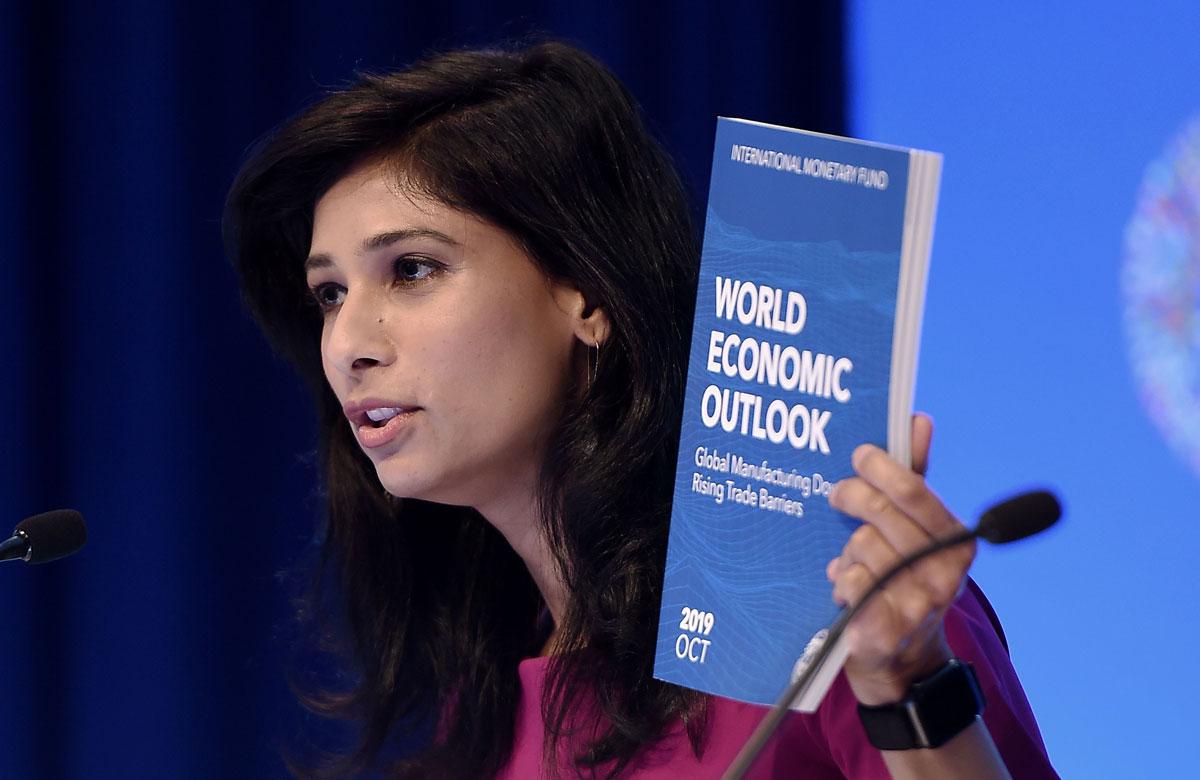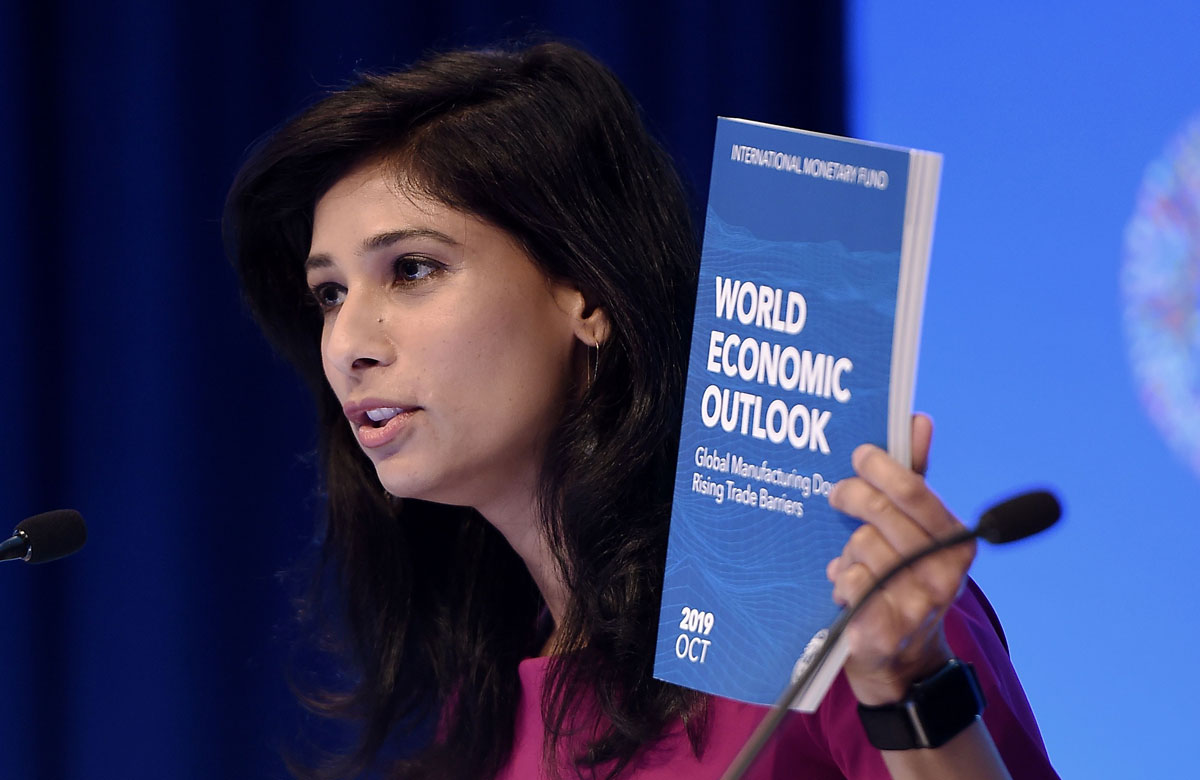IMF downgrades outlook for MENA economies
DUBAI - The International Monetary Fund on Tuesday sharply downgraded growth projections for Saudi Arabia and Iran, the two largest Mideast economies, citing the impact of US sanctions, geopolitical tensions and low oil prices.
In its World Economic Outlook, the global lender cut forecasts for almost all countries in the Middle East and North Africa (MENA) as the region is buffeted by biting sanctions on Iran and nail-biting anxiety over last month's attacks on Saudi oil facilities.
The IMF said Iran's economy will contract by a massive 9.5 percent this year, its worst performance since 1984 when the Islamic republic was at war with neighbouring Iraq.
The figure is 3.5 percentage points lower than the IMF's April projections, reflecting a rapid deterioration in Tehran's economy after the US implemented tighter sanctions on its oil exports, the nation's main source of income.
This is the second year in a row that Iran's economy is mired in recession, after it shrank by 4.8 percent in 2018.
Iran has "been or continues to be experiencing very severe macroeconomic distress," the IMF said, adding that growth in 2020 will be flat.
A drop in the Iranian currency following the re-imposition of sanctions has disrupted Iran's foreign trade and boosted annual inflation, which the IMF forecasts at 35.7% this year.
The Iranian rial official rate is set at 42,000 rials to the US dollar, but its market rate stood at around 115,000 against the dollar on Tuesday, according to foreign exchange website Bonbast.com.
The forecast for Saudi Arabia, the region's largest economy, was also cut to just 0.2 percent for 2019, a substantial 1.6 percentage points lower than April's projections.
The outlook is the worst since 2017 when the kingdom's economy contracted by 0.7 percent.
But the IMF raised its Saudi growth forecast for next year to 2.2 percent, slightly above April's projections, on expectations that the non-oil sectors will strengthen following subsidy reforms.
The oil giant has substantially cut power and fuel subsidies as well as imposed fees on expatriate visas and a five-percent value added tax as part of a reform programme to decrease its dependence on oil.
Fitch Ratings in September downgraded Saudi Arabia's credit rating by one notch following the devastating attacks on key oil facilities that knocked out half its production - a strike that has been blamed on Iran.
Gloomy regional outlook
The IMF also cut its forecast for MENA growth to a meagre 0.1 percent this year, 1.2 percentage points lower than April projections, reflecting weakening economies in a region rattled by conflict.
The cut to MENA growth is "largely due to the downward forecast revision for Iran and Saudi Arabia," it said.
"Civil strife in some other economies, including Libya, Syria, and Yemen, weigh on the region's outlook."
The global lender said that the price of oil and gas, the main source of income for the region, dropped 13 percent between April and October and that oil prices will continue to decline until 2023.
It said the September 14 attacks on Saudi oil facilities have stoked tension and uncertainty in the region, especially following tanker attacks in the strategic Strait of Hormuz through which 20 percent of oil trade passes.
Growth projections for the United Arab Emirates, the most diversified economy in the region, was cut sharply to 1.6 percent from 2.8 percent in April, due to weak oil growth in Abu Dhabi and a general slowdown in Dubai.
The IMF also cut forecasts for other hydrocarbon exporters Qatar, Kuwait and Oman but raised the outlook for Iraq, the region's second largest crude exporter, following a 0.6 percent contraction last year.
The latest World Economic Outlook foresees a slight global rebound in 2020, but warns of the threat that the United States and China will fail to prevent their trade war from escalating as well as MENA tensions.
The updated forecast released Tuesday was prepared for the fall meetings this week of the 189-nation IMF and its sister lending organization, the World Bank. Those meetings and a gathering Friday of finance ministers and central bankers of the world's 20 biggest economies are expected to be dominated by efforts to de-escalate trade wars.
The new forecast predicts global growth of 3% this year, down 0.2 percentage point from its previous forecast in July and sharply below the 3.6% growth of 2018. For the United States this year, the IMF projects a modest 2.4% gain, down from 2.9% in 2018.
Next year, the fund foresees a rebound for the world economy to 3.4% growth but a further slowdown in the United States to 2.1%, far below the 3% growth the Trump administration projects. IMF economists cautioned that that even its projected modest gains might not be realized.
"With a synchronized slowdown and uncertain recovery, there is no room for policy mistakes, and an urgent need for policymakers to cooperatively de-escalate trade and geopolitical tensions," Gita Gopinath, the IMF's chief economist, said in the report.
Last week, the United States and China reached a temporary cease-fire in their trade fight when President Donald Trump agreed to suspend a tariff hike on $250 billion of Chinese products that was to take effect this week. But with no formal agreement reached and many issues yet to resolved, further talks will be needed to achieve any meaningful breakthrough. The Trump administration's threat to raise tariffs on an additional $160 billion in Chinese imports on Dec. 15 remains in effect.



